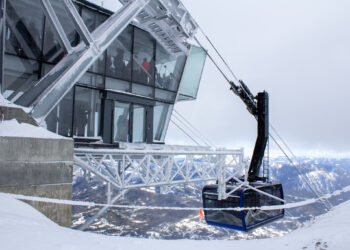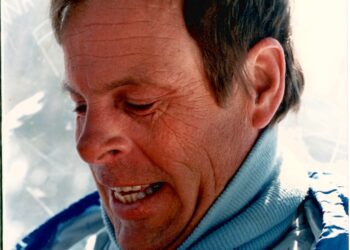By Sarah Gianelli EBS Associate Editor
BIG SKY – At a Jan. 16 meeting of the Big Sky Water and Sewer District board, the discussion of treated effluent disposal options continued as storage capacities reach their limits.
Potentially exacerbating the issue is the anticipation of a heavy spring runoff.
“In years we have high snowpack levels, we see the biggest flow in May,” said Ron Edwards, Big Sky Sewer and Water District general manager. “But we should be irrigating by May, so even if we get the big runoff, I think we’ll make it.” Edwards added that, historically, Big Sky saw flows double in 1997 and 2000, both years of deep snowpack.
Not only does a heavy spring melt put an added strain on open storage pond capacity, it can hinder the amount of water that can be recycled for irrigation if the area’s golf courses are already over-saturated.
The bottom line, Edwards said, is that more water creates more water to get rid of—or move around, which the district does by pumping it into storage ponds at the Yellowstone Club and Spanish Peaks Mountain Club.
The newly constructed lower pond at Spanish Peaks is currently drained while repairs continue on a small leak. While this isn’t affecting the Big Sky Water and Sewer District in the short term, Edwards said if they’re not able to use the pond moving further into winter and spring, it could become an issue.
All of these factors point to the need for wastewater disposal alternatives—options that include using treated effluent for snowmaking, increased groundwater infiltration, irrigation and the most contentious, discharge into the Gallatin River.
To devise a concrete plan to move forward with any or all of these possibilities, Edwards was given the authority to negotiate the final details of a $360,297 contract for a treatment facility upgrade plan. The civil and environmental engineering firm, AE2S, had an engineer and communications strategist present at the Jan. 16 meeting.
“The crux of the whole thing is we need to expand our treatment plant, and improve our treatment technology,” Edwards explained during a Jan. 17 interview.
From AE2S the district will receive a detailed engineering analysis of what the disposal options are, what the limits of treatment look like for those different options, projected capital costs of construction, and operating and maintaining those upgrades over time.
Edwards stressed that discharge into the middle fork or main stem of the Gallatin River were just two of the options the engineers will be looking into, and that while it would be a last resort, it would still be beneficial to bring treatment levels to the “limits of technology,” and have a discharge permit in place in the case of an emergency situation.
“If we’re going to elevate the treatment, it is still our last option,” Edwards said, while stressing that they are looking to raise treatment standards above requirements.
“It’s a very difficult thing to move this water around and expect everything to work perfectly,” he said, explaining that a discharge scenario would entail one pipe from the treatment site to the waterway.
“We’re just trying to close the loop on all this water and look at what it will cost, and what it will take to do some of these options for disposal. There’s nobody in the state who’s looking at this with the scrutiny that we are,” Edwards said.
He said that once funds were secured for the as-of-yet recommended treatment facility upgrade, implementing those improvements would take at least three years, and that would be on a fast track.
“We just authorized a $360,000 contract to meet treatment levels that no one else in the state has ever done,” said Mike DuCuennois, a BSWSD board member and the Yellowstone Club’s vice president of development, during the meeting. “That’s a big win.”
In acknowledgement of the AE2S representative assigned to guide the board’s messaging about plans moving forward, DuCuennois said, “And we’re not looking for something we can get away with, we’re looking for the best solutions.”
Among other topics addressed at the meeting, the Big Sky Fire Department Chief William Farhat sought permission to move forward with the construction of a training facility on BSWSD property, behind the water treatment plant and adjacent to Big Sky Community Park.
As Farhat explained, structure fires in Big Sky are rare but they do occur, and the facility would provide opportunities for firefighters to gain hands-on experience in the event of this type of fire. The board expressed support of leasing or licensing the property to the fire department, but hesitated over the questionable aesthetics of a facility constructed out of three storage containers, and security in the form of chain-link fencing.
Anticipating complaints from the community, if it were considered an eyesore, board members suggested adding a façade, roof or porch that would make it look more like a historic ranch or Western saloon, rather than three welded-together freight containers. Farhat said he would present some revised drawings for the board at the next meeting.
“You can put lipstick on a pig, but it’s still a pig,” said Big Sky resident Steve Johnson, from the rows of chairs provided for the public.
The Big Sky Sustainable Water Solutions Forum, a diverse group of watershed stakeholders, will hold its final meeting on Jan. 31at the Big Sky Chapel. The next meeting of the Big Sky Water and Sewer District board will be held Feb. 20 at 8 a.m. in the BSWSD office. The filing window for candidates interested in running for one of two open board seats in the May 8 election is Feb. 12.













